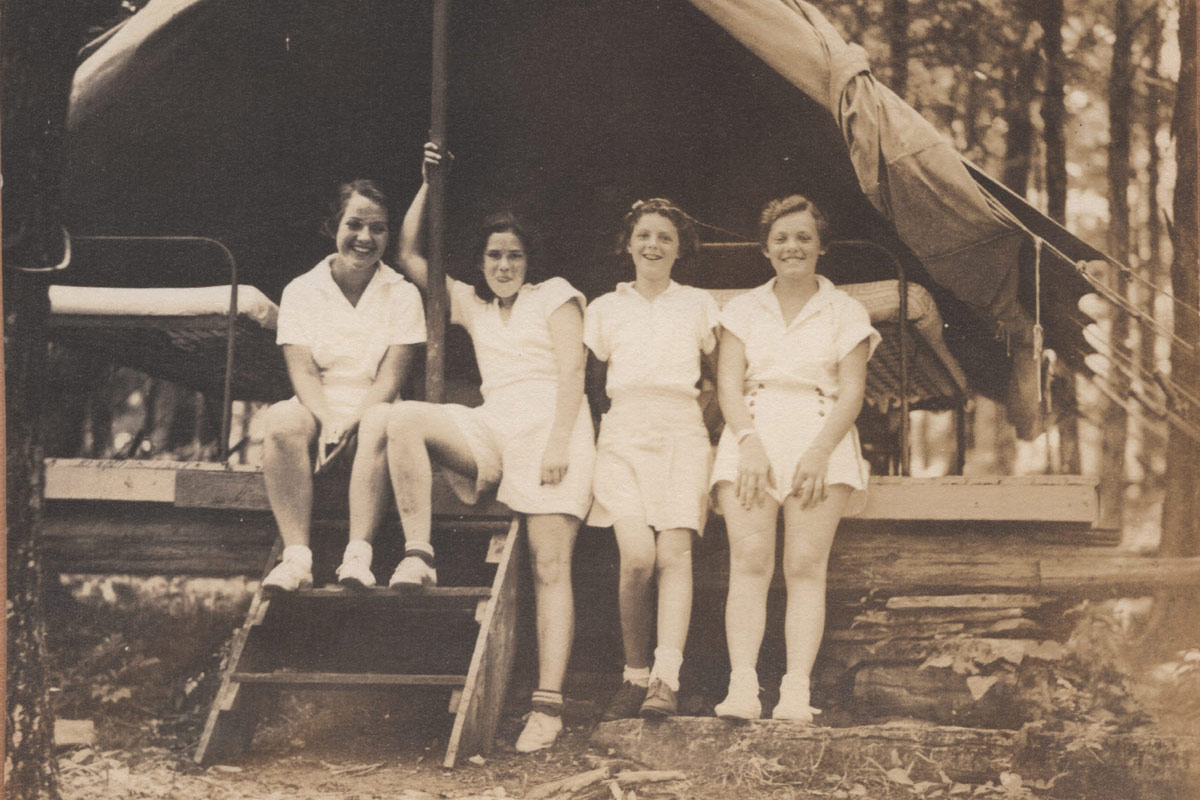



In March 2017, Floracliff added an additional 59 acres to the sanctuary known as “Trail’s End.” This name dates back to its time as Camp Trail’s End, one of the first organized camps for girls in the South. In 1913, Mary DeWitt Snyder started the camp on 250 acres situated along the Kentucky River between Elk Lick Creek and Boone Creek “in a section of country famed for its beauty of river, cliffs, and fields”. Sarah Gibson Blanding joined as Assistant Director of the camp in 1921.
The camp was open for girls between the ages of 8 and 18 and included activities such as swimming, canoeing, rifle practice, tennis, horseback riding, archery, handicrafts, dramatics, woodcraft, nature study, music, and outdoor dancing. The camp operated during the months of July and August, offering “a wholesome outdoor life, planned to develop strong, graceful bodies, happy hearts, and reverent minds. Under the leadership of carefully selected councilors, the girl’s views are broadened, she acquires self-reliance, good sportsmanship and a regard for the real values in life.” Camp life was not restricted to the Trail’s End grounds. Each summer the girls would take excursions by barge, horseback, and automobile to other Kentucky sites such as Mammoth Cave, High Bridge, Shakertown, and Berea.
In 1917, a lodge was built “among lofty oaks and fragrant cedars on a high bluff, overlooking the Kentucky River.” The lodge provided a gathering spot where the girls could read, play piano, and store their wardrobes. It also included an office and store. The girls slept in tents on platforms located in the woods below the lodge. Each tent accommodated three campers and one counselor. In 1922, a second building, known as the Hill House, was constructed uphill from the lodge. This building housed a large, screened dining room and kitchen, a craft shop, hospital room, and directors’ quarters.

Camp Trail’s End ended in 1935, but Mary DeWitt Snyder continued to use the facilities for community gatherings. After she passed away in 1949, the land and facilities were used as a camp for the Lexington Girl Scout Council, local Boy Scout troops, and Central Christian Church in Lexington. In the early 1980s, an heir of Mary DeWitt Snyder converted the lodge to a residence. It was around this time the Hill House was burned down by vandals. The lodge remained a private residence until Floracliff acquired the property in 2017.
In addition to the lodge, other remnants of the camp are still evident today. The old game court remains a distinct, rectangular opening in the woods. The foundation of the outhouse can be seen along a trail and wide paths that were once used as horse trails now provide easy walking trails. Much of the forest has been untouched since then. On a hike down the forested trail to river, one can imagine what a delight it must have been to spend summers here in the 1920s.

